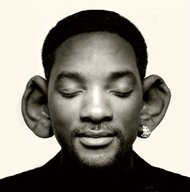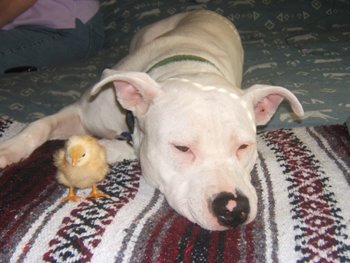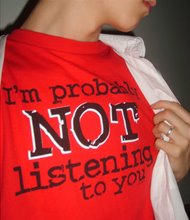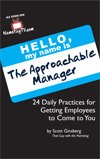 My yoga teacher made a powerful comment in class yesterday.
My yoga teacher made a powerful comment in class yesterday.
She said, “As you listen to my instructions, BE SURE that you’re also listening to what your body is telling you as you get into the postures.”
Pretty cool, huh?
And now that I think about it, during yoga yesterday’s class I DO remember what my body was telling me:
“Scott, I can’t believe how many egg rolls you ate for lunch, you putz.”
Dee-licious.
LESSON LEARNED: Listening to others requires listening to yourself first.
That means observing. Becoming aware of the feelings and emotions that surface, but not adding evaluation or appraisal of the moment. Simply remaining alert to your own thoughts, acknowledging rising feelings. What are your listening triggers?
That means embracing. Calmly and objectively attending to your own internal experiences in a loving way. Holding these observations about yourself in unconditional positive regard. What is your body telling you right now?
That means responding. Not reacting, but responding to your own internal cues. Then, once you’ve listened to your body’s voice, you take responsibility for your thoughts, holding them in silent awareness and then gently returning to the moment. Are you able to acknowledge and return to the conversation?
Ah, your inner voice. The loudest sign in the world.
So, now that you understand the philosophy, the following four practices will equip you to effectively, empathetically and patiently listen to another person while simultaneously listen to yourself:
1. Assess your receptiveness. Before you get started with a conversation, honestly assess your ability and willingness to listen in that moment. Pay exquisite attention to yourself and ask:
(1) Is this a good time for me to listen?
(2) How much of my energy am I willing and able to give this person right now?
(3) What are my fears about communicating with this person?
Then, during the conversation, before interjecting, interrupting or blurting, consider questions like:
o Is this comment truthful?
o Is this comment necessary?
o Is this comment worthwhile?
o What can I say that will contribute?
o Is this comment a thought or an impulse?
o Is this comment improving on the silence?
o What can I say that will make a difference?
o Is this comment relevant to the other person’s experience?
o What, specifically will the other person gain from your contribution?
2. Know Your Triggers. Certain words offend you. Certain topics scare you. Certain issues make you feel sick to your stomach. That’s cool. Next time you have a few spare minutes, try this…
Make a list of your Top Five Listening Triggers are AND how you feel when you hear them. This self-knowledge exercise subconsciously prepares you to handle future reactions.
REMEMBER: Awareness is the first step towards mastery.
3. Note the distraction. As Yoda often said, “I feel a disturbance in the force…” That’s the attitude you most have. That you’re simply observing what’s going on. And that’s IT, for now. Anything beyond that becomes a distraction, as internal emotional activity often short-circuits the listening process.
So, should one of your inner triggers get set off, here’s what you do:
a. Breathe.
b. Be aware of what IS.
c. No judgments, no worries, no reactions.
d. No appraisals, no evaluations, no assigning value.
e. Make a note – physically or mentally – about your observation.
f. Quickly, yet gently return to the conversation.
.4 Articulate What’s Occurring. At the appropriate time, verbalize your observations. Say what you see. Share what you feel. Objectively offer non-threatening statements like:
a. Just now I felt…
b. I have a hunch that…
c. Now I am aware that…
d. As I listen to you, I feel…
e. My intuition tells me that…
f. In my gut, I’m asking the question…
g. When you said the word (x), the first thought that came to my mind was….
So, that’s the secret – listening to yourself first.
THAT MEANS: Assessing your receptiveness. Knowing your triggers. Noting the distractions. Articulating what’s occurring.
I challenge you to learn, know, live and BE these practices TODAY.
Now if you’ll excuse me, I have to go wolf down a few egg rolls before yoga class.
LET ME ASK YA THIS…
Are you listening to yourself first?
LET ME SUGGEST THIS…
For my list called, “101 People (not) to Listen to,” send an email to me, and I’ll send you the list for free!
* * * *
Scott Ginsberg
That Guy with the Nametag
[email protected]
 Never the same speech twice.
Never the same speech twice.
Always about approachability.
Watch The Nametag Guy in action here!

 As a writer, it’s almost impossible for me to read a book, have a conversation or experience ANYTHING without writing something down.
As a writer, it’s almost impossible for me to read a book, have a conversation or experience ANYTHING without writing something down.
 “Yeah, but what does that have to do with MY problem?”
“Yeah, but what does that have to do with MY problem?”
 Growing bigger ears is about listening to others, listening to the world, and of course, listening to YOURSELF.
Growing bigger ears is about listening to others, listening to the world, and of course, listening to YOURSELF. The word “emotion” comes from the Latin emotere, which means, “To disturb.”
The word “emotion” comes from the Latin emotere, which means, “To disturb.” What’s YOUR approach?
What’s YOUR approach?
 How many unsolicited referrals did YOU get this week?
How many unsolicited referrals did YOU get this week?  Who’s telling their friends about YOU?
Who’s telling their friends about YOU? 1. They just don’t care.
1. They just don’t care. Is your frontline IN line?
Is your frontline IN line? Growing bigger ears isn’t just about what you DO.
Growing bigger ears isn’t just about what you DO. If they can’t come UP to you; how will they ever get BEHIND you?
If they can’t come UP to you; how will they ever get BEHIND you?